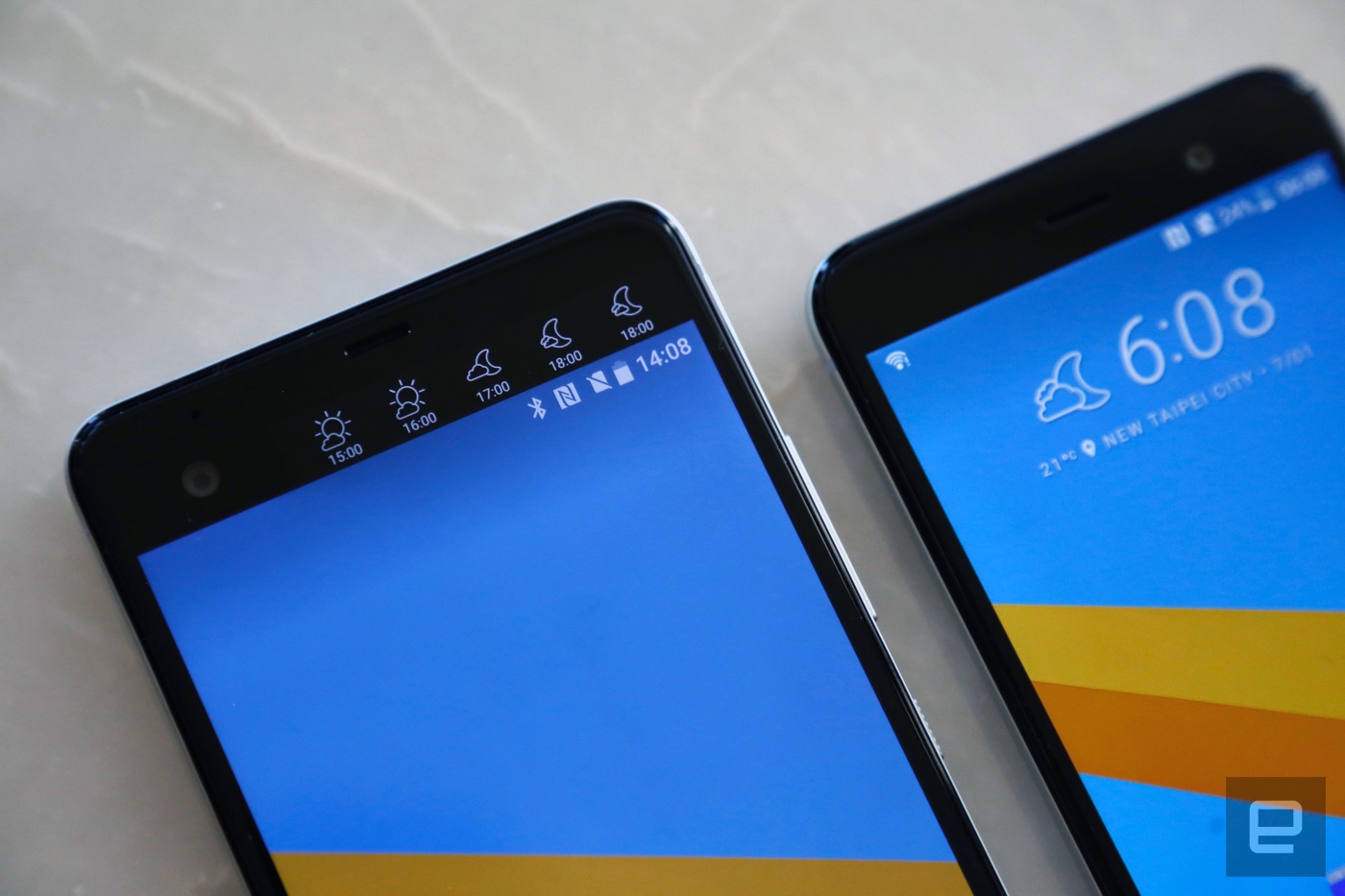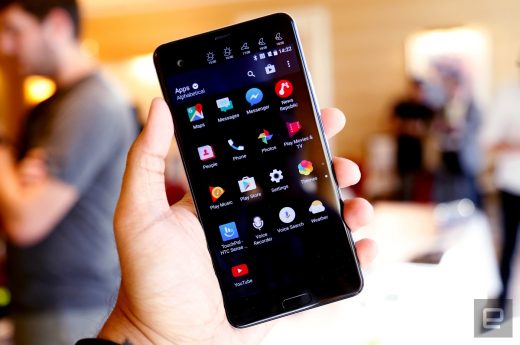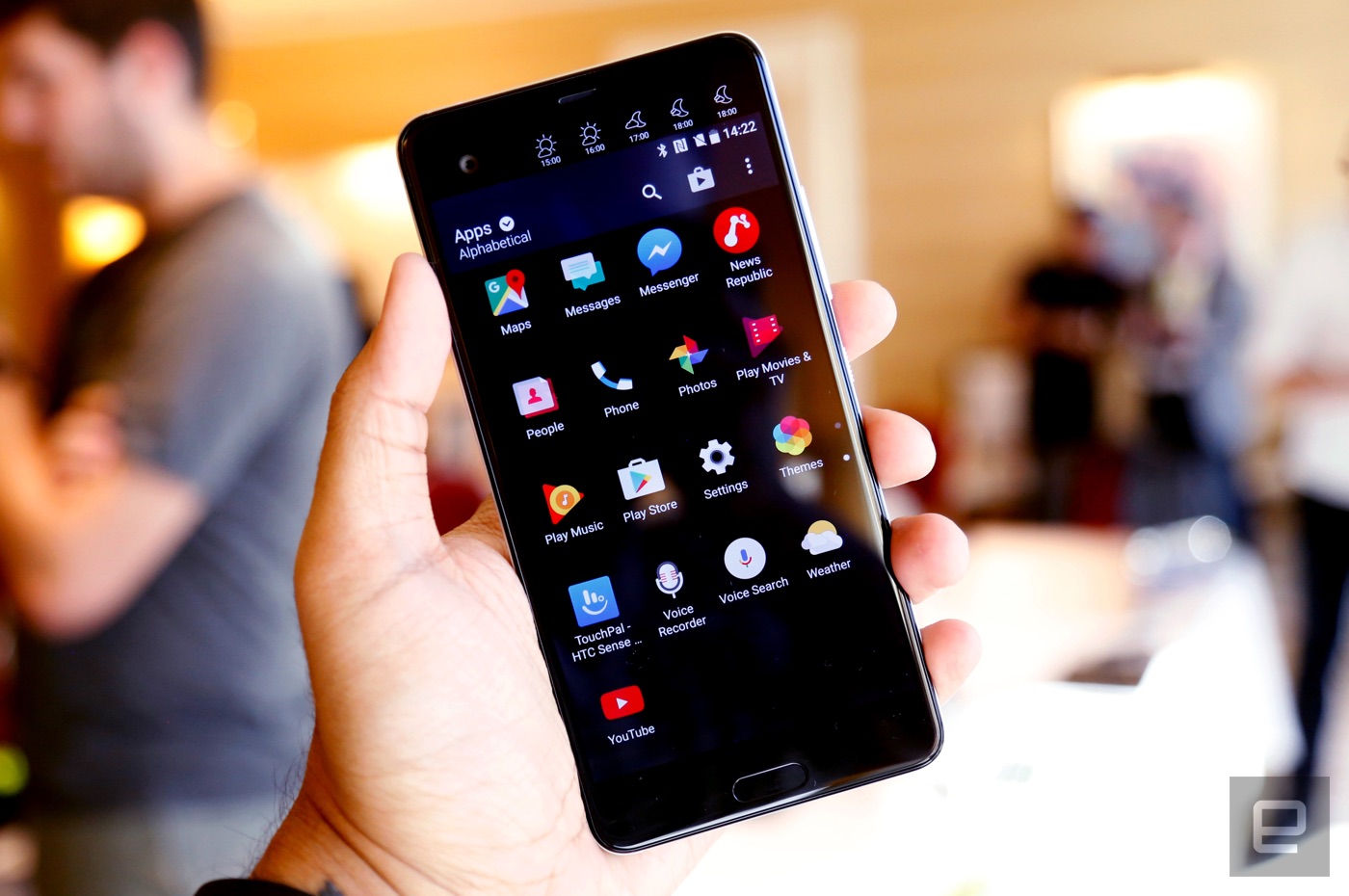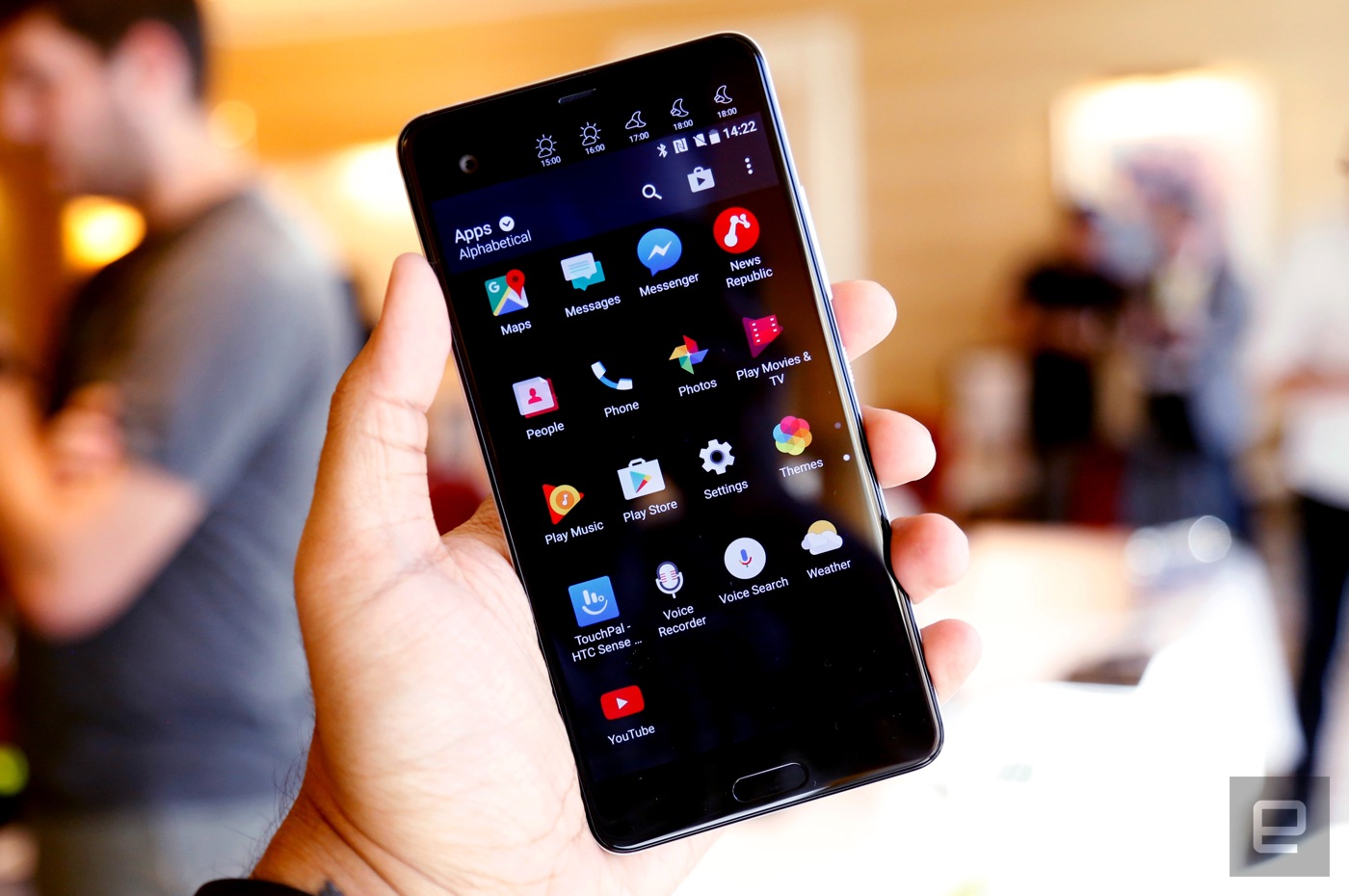HTC’s ‘U Ultra’ flagship phone pairs AI with a secondary screen
Last year, HTC’s flagship “10” smartphone won plenty of accolades. Engadget, for its part, liked the phone because the company eschewed gimmicks in favor of an excellent no-nonsense device. With a new year comes a new flagship, though, and this time HTC is taking a different approach. Meet the HTC U Ultra, a peculiar little machine that should seem familiar to fans of other high-end smartphones.
Gallery: HTC U Ultra and U Play hands-on | 24 Photos
When we say “familiar,” though, we’re not talking about the phone’s design and materials. In fact, the U Ultra’s exterior is unlike anything else in recent memory. Some of HTC’s usual design flourishes, such as the pill-shaped fingerprint sensor and the centered UltraPixel camera, are still here, but the company’s designers traded the usual aluminum look for a finish that seems almost liquid. The frame is still made of metal, but the back is covered with a beautiful curved glass that looks almost pearlescent under the right light. It’s a gorgeous effect born from HTC’s obsession with material science that plays well on all four of the U Ultra’s colors (black, white, blue and pink). And beyond all that, it feels pretty great in-hand too, in part thanks to a sleek profile measuring just under 8mm at its thickest point.
While you might notice those finishes first, it’s the screen that makes the U Ultra feel more like an LG phone. Well, the second screen, to be more precise: It sits above the Ultra’s 5.7-inch Quad HD Super LCD 5 display just like it did on the LG V10 and V20. Sure enough, you’ll be able to add shortcuts to apps and get weather readouts, but HTC is counting on artificial intelligence to actually make that second screen useful. Contrast that with devices such as the V20, where notifications appear as events occur, ultimately leading to a list sorted by time rather than importance.

Not so on the U Ultra. It only displays notifications from people it thinks you want to hear from, though that requires some initial setup. Darren Sng, HTC’s head of global product marketing, laid out situations where the phone would try to be proactive. Let’s say there’s rain in the forecast today: The so-called Sense Companion will warn you on that second screen before you leave the house. And if a holiday rolls around and you don’t have any pressing events in your calendar, the assistant will shut off previously set alarms. (That last one sounds a little dicey to me, but we’ll have to wait and see how well this works over time.)
Those machine learning smarts extend beyond that second screen. As with Huawei’s Mate 9, the phone will attempt to suss out underlying patterns in how we use our phones and allocate resources or shut down services in response. And like basically everything else at CES, you can talk to it through an array of microphones. Look closely enough at the U Ultra and you’ll spot four of them dotting the body. They’re always on and always listening for your voice within a range of about two meters.
Gallery: HTC U Ultra press shots | 8 Photos
Of course, playing with a phone like this for 45 minutes can only reveal so much. It will take time for the true value of HTC’s approach to AI to become apparent, but at least the Ultra itself seems to run smoothly. My usual routine of scrolling through lots of websites, launching various apps and switching among them all willy-nilly couldn’t throw the Snapdragon 821 and its 4GB of RAM for a loop.
All of Android 7.0 Nougat’s software niceties are ready and waiting for you here too. There’s a 12-UltraPixel camera with an f/1.8 aperture and optical-image stabilization on the Ultra’s rear — it seemed to take crisp, nicely exposed photos in our Vegas demo room — but the front-facing camera technically snaps selfies at an even higher resolution. It’s a 16-megapixel sensor with what Sng calls an “UltraPixel mode” that presumably resamples that extra image data into a better photo, but the results weren’t particularly obvious in my brief demo.
Oh, and get this: HTC ditched the headphone jack too, so you’ll have to use some USB Type-C headphones. Despite what Apple said months ago, it feels like it takes more courage these days to leave the standard headphone jack alone. At least you can augment the phone with more storage. You’ll be able to choose from 64GB or 128GB variants right, and while the latter has sapphire glass covering the screen instead of Gorilla Glass 5, both will take microSD cards as large as 2TB.
Gallery: HTC U Play press shots | 8 Photos
For those who don’t need a secondary screen or even just a phone that big, there’s the HTC U Play. It boats the same striking design and AI smarts and pairs them with a smaller body and a more pocketable 5.2-inch, 1080p display. As you’ve probably already figured out, this smaller variant is also a little less impressive; it packs one of MediaTek’s octa-core Helio P10 chipsets and ships with either 3GB of RAM and 32GB of storage or 4GB of RAM and 64GB of storage. The main camera has also been knocked down to 16 megapixels (none of that UltraPixel business here), though it’s unclear as of this writing how much less these models will cost compared to the flagship U Ultra.
I’ll admit to being a little confused when I first handled these two phones. Sure, HTC always had a peculiar sense of itself as a company, but it seemed like the progress made with the 10 would ensure some logical, safe upgrades when it came time to craft a sequel. That’s definitely not what we’re looking at here: HTC is done playing it safe, and the Ultra doesn’t feel a lick like an HTC 11.
More curious is HTC’s assertion that having a second screen by itself doesn’t help users. I’d have to agree with that. After using the V20 for a while, I can say that LG’s implementation felt like a way to offload notifications and highlight a few extra controls. It was enough for some people, but the V20’s additional screen never felt all that useful. By making that display a home for a virtual assistant, HTC might have found the second screen’s ideal purpose.
There are still plenty of questions that need answers, but it’s already clear that HTC has leapt into new territory with these two devices. The biggest question of all? Whether the U Ultra and U Play manage to transcend gimmickry and fit all of these components together into something truly valuable. We’ll get cracking on our full review once we get a hold of review units, but until then, you can pre-order the U Ultra from the company’s website starting today.
Last year, HTC’s flagship 10 smartphone won plenty of accolades — we liked it because the company bucked the gimmicks and built a no-nonsense device that was excellent in its own right. With a new year comes a new flagship, though, and this time HTC… Engadget RSS Feed
(78)




















